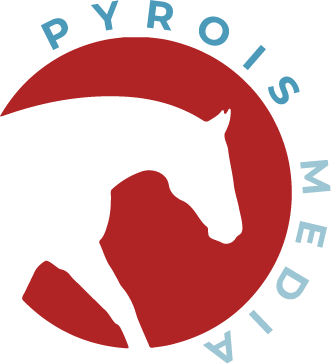You’ve designed your perfect website and visually it looks like it could win awards, there’s just one problem – you’re not sure how to hook viewers with your text.
Writing often seems like the easiest thing in the world to do … until you do it. You can know everything about yourself or your business but for some reason, it is often hard to put those words on a page. Have no fear, today’s blog has a few tips that will help your writer’s block disappear in no time.
1) Know Your Audience
You know what audience you’re trying to attract, so make sure to cater your material to them. If your audience is an equestrian crowd, don’t be afraid to use equine terms, just remember not to alienate others that may be visiting if you want a broader reader base. Generic writing is fine if you are trying to reach a wide group of people but in most cases your writing should cater to the audience you’re trying to attract.
2) Put Important Information at The Beginning
This seems like an obvious one, but it can be hard to remember in the midst of writing. The information that you feel is most important should go in the first few sentences. If your readers have to dig for something as simple as your name in your “About Me” section, you need to re-write the piece to make it easier to find the information that means the most.
3) Be Concise
People read articles (and the stat can also be translated to website pages) for an average of 37 seconds, according to Newscred. So much like everything else you write, you need to make it snappy if you want to keep people on your site.
4) Add Some Color
This may seem counter to the last point but adding some detail to what your saying can go a long way. Descriptive words about your life can be short but also paint a picture for your reader, making them eager to read more about your topic and overriding that 37 second rule.
5) Make It Easy to Understand
You may think that throwing in a complicated word here and there makes you sound smart, but it doesn’t achieve anything but frustrating those reading the story if your reader has to look up the definition to understand it. You may have to add a few more words to explain what you’re talking about but it’s better to explain in simpler terms than have your reader leave the page.
6) Check Your Spelling
Read, re-read, take a quick break from whatever you’ve wrote, and then re-read one more time before you publish. If you edit right after you finish writing, your brain will know what you were trying to say and you are likely to miss mistakes. Misspelled words can quickly turn a masterpiece into a piece no one wants to read – something that can hurt your website’s reach and ultimately your ability to prosper.
If you have any questions about how to improve your website’s content, Pyrois Media offers both content creation and editing services. Feel free to email Melissa@PyroisMedia.com for more information for any questions you may have about the services. I’m happy to answer any questions or concerns you may have about content creation to help your business succeed.

Do you have a topic you’d like to see covered here? Email Melissa@PyroisMedia.com with your suggestions and you could see it in a future blog!
““Melissa has been producing content for the Coolmore America website since we engaged her during October 2019 and we have been very impressed with her work. Melissa has an excellent knowledge of racing and breeding which is reflected in her writing. Professional and diligent, she’s a pleasure to deal with and comes highly recommended by us.””
– Richard Henry, Coolmore

